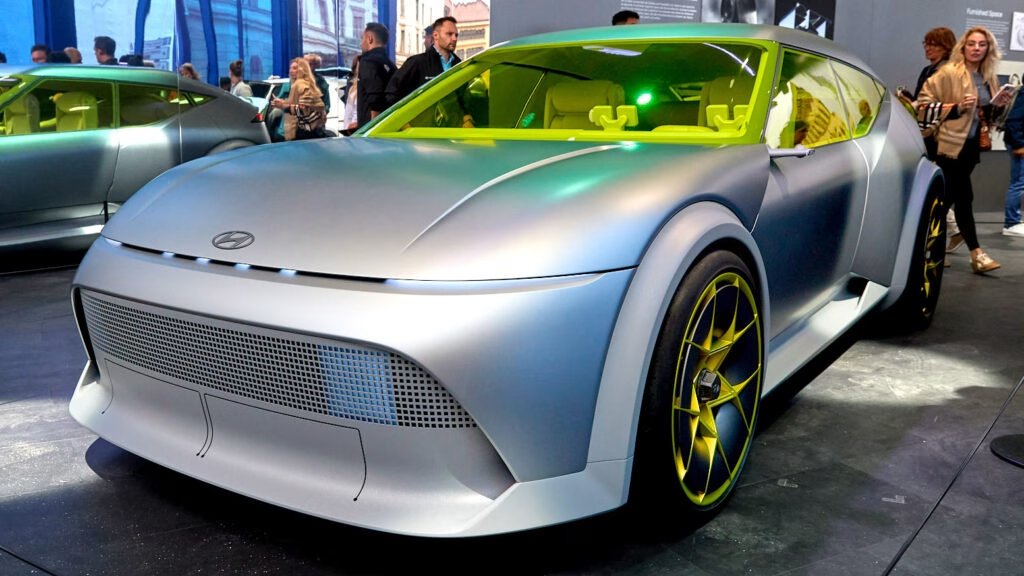Is Hyundai Really Bringing Back the Affordable Electric Hot Hatch?
If you’ve been mourning the loss of the i30 N in Europe, you’re not alone. The beloved hot hatch was a casualty of tightening emissions rules, leaving a big gap for drivers who crave affordable performance without the guilt trip at the gas pump. Now, Hyundai’s latest moves suggest that gap could soon be filled by something fresh, electric, and just as feisty: a potential Ioniq 3 N.
Why Is There So Much Buzz Around Hyundai’s Next Electric Hot Hatch?
It’s not just wishful thinking. Hyundai’s CEO for Europe, Xavier Martinet, has openly hinted that a performance version of the upcoming Ioniq 3 is on the table. The company’s N sub-brand has already wowed critics with the Ioniq 5 N, but let’s be honest—its price tag puts it out of reach for many who loved the i30 N’s value-driven punch. The Ioniq 3, expected to land in 2026, could be the answer. And if the N version gets the green light, we might see it as soon as 2027.
The real kicker? Hyundai’s Concept Three, unveiled in Munich, looks every bit the part. Think wide fenders, a cheeky ducktail spoiler, and a stance that screams “let’s play.” It’s a modern twist on the Veloster’s spirit, minus the quirky doors—production models will likely stick with a practical five-door layout.
What’s Holding Hyundai Back From Giving the Ioniq 3 the N Badge?
Here’s where things get interesting. Internally, Hyundai knows Europe still loves a good hot hatch. But as Martinet put it, “The question is always if there is customer demand? Is there a market?” The brand wants to be sure there’s a real appetite before pulling the trigger. Generating the right kind of emotion—making people want this car, not just need it—is fundamental.
Simon Loasby, Hyundai’s head of styling, echoed this sentiment. The Concept Three didn’t wear an N badge at Munich, not because it couldn’t, but because nothing’s official yet. Still, the design language is clear: this is a car itching for a performance variant.
How Will the Ioniq 3 N Stand Out From the Crowd?
Let’s talk hardware. While the Concept Three is a show car, it’s not just for show. Expect the production Ioniq 3 to feature a sleeker, more conventional hatchback body, but with plenty of attitude. If Hyundai follows the Ioniq 5 N’s playbook, we could see a dual-motor setup and chassis tweaks that make backroads feel like playgrounds. And while the wild diffuser with faux exhaust speakers might get toned down, the aggressive stance and playful details are likely to stick around in some form.
The competition is heating up, too. Volkswagen’s ID. Polo GTI, Peugeot’s 208 GTi, Alpine’s A290, and the Mini JCW Electric are all gunning for the same buyers. But the Ioniq 3 N would be gunning for the bigger VW ID.3 GTX (soon to be GTI), making it a heavyweight in the electric hot hatch league.
When Could You Actually Drive One?
If Hyundai’s board gives the nod, the Ioniq 3 N could hit the streets around 2027. That would put it right in the thick of a new wave of electric performance compacts. Meanwhile, Hyundai’s not putting all its eggs in one basket—they’re also working on a hybrid i20 N and a new Elantra N sedan with a classic gas engine, showing they’re serious about giving enthusiasts options.
What Does This Mean for Everyday Drivers?
For anyone who’s felt priced out of the current EV performance market, the Ioniq 3 N could be a game-changer. It promises to blend everyday usability with the kind of fun factor that’s been missing from many new electric cars. And with Europe’s continued love affair with hot hatches, Hyundai’s timing couldn’t be better.
The big takeaway? The future of the hot hatch isn’t about perfection—it’s about smarter adjustments. Start with one change this week, whether it’s following the latest EV news or test-driving an electric hatch, and you’ll likely spot the difference by month’s end. The next era of affordable, electrified fun is closer than you think.

